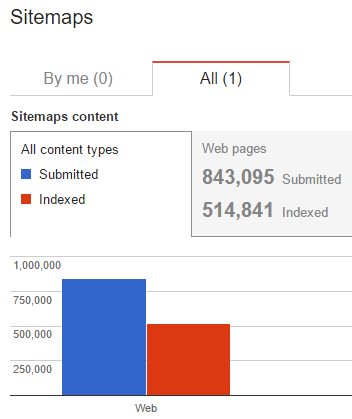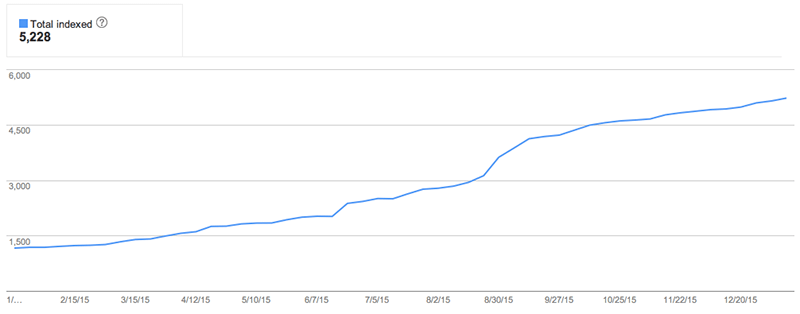The role of technical SEO is “makeup”? Really?
In a response to a column published earlier this week about the place of technical SEO, contributor Patrick Hathaway argues that technical SEO is much more than a "nice to have" feature.

I was appalled by the main message of Clayburn Griffin‘s column the other day, “The role technical SEO should play: It’s makeup,” and I made my feelings towards the post pretty clear on Twitter.
Many others shared my sentiments. So when Search Engine Land’s Executive Features Editor, Pamela Parker, reached out to see if I wanted to write a reaction piece to express some of those views, I was happy to oblige.
The purpose of this post is to provide a counterpoint, and I will attempt to (re)position technical SEO as I see it. This necessarily means I will need to point out what I perceive to be some misconceptions in the original post…
Misconception #1: Technical SEO is superficial
The main issue I took with Griffin’s piece is that the analogy he used — “technical SEO as makeup” — is totally off the mark.
Technical SEO is a fundamental requirement for websites of any size to rank in organic search, so to describe it as superficial is simply inadequate. You can publish all the best content in the world, but if Google can’t crawl and index it, it’s not going to rank.
I thought about coming up with my own analogy — perhaps the foundation of a house, where SEOs are builders — but do we really need to do that? Technical SEO is a niche discipline within the broader banner of digital marketing. The fact that analogies are used in the first place is simply due to a lack of understanding.
Technical SEO is about understanding how search engines access and interpret the content on a website — where they crawl, how they render the content, which pages get indexed, how quickly the site responds. If the search engines have trouble with any of these aspects, you could be placing underlying restrictions on your ability to maximize traffic from the biggest “free” source available.
It would be the equivalent of professional negligence to take on a new client and not do any kind of technical audit — and to spend their entire budget building content/links with no knowledge or awareness of the site’s capability to see any benefit.
That is not to say that all websites need hours and hours of ongoing technical work. There is most definitely a point of diminishing returns, particularly for small/new websites that have a lot of the basics right. I am not arguing with this at all — in fact, my company’s website is probably quite a good example. We know the fundamentals are solid, but we can get a much better ROI at the moment from building a brand and a better product, so we rarely touch the website.
But the bigger and more complex a site becomes, the more important technical SEO becomes, as the opportunity cost is so much greater.
Misconception #2: Technical SEO doesn’t lead to big wins
This was the section of Griffin’s article I found the most bizarre:
The problem is when it comes to technical SEO, there are no big wins; there’s only recovery from or prevention of big losses. Other than fixing what’s broken, technical SEO is not something that can get you increased search traffic. And isn’t that the true purpose of SEO?
When I start working with new clients, the first things I want to look at are crawling and indexing. Generally, if you have a problem here, it is going to be a problem worth solving before you go ahead and do anything else. And fixing such problems can absolutely lead to big wins.
This is from a technical audit I carried out recently, taken from the client’s Google Search Console account:
They have a massive indexation gap — and not just on any old pages. These are product pages that are not indexed.
Figuring out exactly why this was happening was non-trivial and most certainly not covered by “best practice” guidelines. If and when these product pages do get indexed, it should represent a massive win for the client.
Here’s another example, not a client this time, but a user of our software who had been working on getting his product pages indexed and was using URL Profiler’s indexation checker to confirm.
In the client’s own words:
[blockquote cite=”Neil Rader, TrophyCentral.com”]I have 5800 total pages, and 6 months ago only had 1400 of them indexed! Now I am up to 5100 indexed, and I’m working on the rest. Our organic traffic is up 65% and orders are up 40%![/blockquote]
If that’s not a big win, I don’t know what is. Here’s a bigger one:
Nick Eubanks published a case study last year, “How We Used Technical SEO To Increase Website Traffic to Over 1,000,000 Visits Per Month.” (The title says it all, doesn’t it?)
This was the impact they saw from technical SEO improvements:
I’ll let Nick explain how they did it:
[blockquote cite=”Nick Eubanks”]Without analyzing the site’s log files, we wouldn’t have identified the code that was causing Googlebot to get hung up, drag the site crawl budget to a screeching halt, and design a solution to fix the site’s low average daily crawl rate. It was this technical analysis that led us to start testing the size of the sitemaps and fix global elements in the site’s header that optimized the sites overall crawlability and index rate.[/blockquote]
By the way, I’m not trying to claim that technical SEO should exist in a silo. It is pretty obvious that you can reap the greatest rewards when technical SEO works in synergy with a content and promotion strategy.
The graph below (taken from SEMrush) is of a client that was producing loads of great content and doing lots of things right. I first started working with them at the end of 2013, when they were already doing remarkably well. We did some basic technical and on-site SEO training, which they implemented over the next few months and saw some slow but steady gains.
In mid-2015, we carried out an indexation audit for them, as they had hundreds of thousands of thin pages indexed. We analyzed their logs and compared to crawl data to identify what was causing the issues, and after implementing our recommendations (a myriad of robots directives), their organic search traffic shot up — and has not looked back since.
There is no way they would have experienced such gains without all the content they were consistently producing, but it is the combination of sound technical SEO and a focus on content that has really helped them fly.
Misconception #3: Technical SEO only fixes problems
While it is true that a large part of technical SEO involves identifying and fixing issues that may be hampering site performance, the correct application of technical SEO can also open up massive opportunities.
Internationalization
Expanding your website to offer products/services in different countries is often a massive growth opportunity, and the implementation required is extremely technical.
In a big international rollout, The Guardian migrated three domains into one in order to consolidate their traffic across devices and countries to a single global domain. The project was hugely complex and highly technical, mainly due to sheer size of the site and the number of different moving parts.
Here is Matthew O’Brien from The Guardian:
[blockquote cite=”Matthew O’Brien, The Guardian”]Six months on, we are still experiencing record traffic. Despite the initial short-lived dip in traffic, the project was an overall success and has not interfered with The Guardian’s continual growth.[/blockquote]
Site migrations
Site migrations are almost always carried out because the website owners recognize an opportunity for growth, such as a rebrand. And let’s not pretend that site migrations are not highly technical.
The biggest SEO challenge when migrating a site is doing so without losing out on organic search visibility, rankings and traffic. Get your technical SEO right, and this is what you should see:

Image source: Builtvisible
Featured snippets
Obtaining rich snippets or featured snippets in the SERPs is also not a “problem” to be fixed, yet achieving them can lead to improved click-through rate, as Ben Goodsell discussed in his post, “SEO For Featured Snippets Leads To Big Gains.”
Matthew Barby recently published some research on featured snippets, and his experiments found that building backlinks had very little impact on achieving the snippets; he advised instead to focus on on-page signals and better matching your content to what the search engines are looking for.
Misconception #4: Technical SEO is easy
This is like saying math is easy when all you’ve been doing is basic algebra. Then someone asks you to solve Einstein field equations…
Yes, of course, some bits of technical SEO are straightforward. There are some basics that are easy to learn and easy to spot, but that is just the tip of the iceberg.
What I often find with people that don’t really understand technical SEO is that they tend to follow a “checklist mentality.” But good technical SEO is not about following a checklist and ticking things off so you can show the client you’ve done them; it is about digging deep into the data, understanding at a core level how search engines’ spiders are interacting with the website, and identifying those (sometimes small) changes that could make a big difference.
It’s not black or white
The concept that there is a “right” way and a “wrong” way to set up a website is naive; what we are doing is called “optimization” for a reason! The best technical SEOs are constantly experimenting and testing new and different techniques to improve performance, as a lot of cases are far from black-and-white.
Technical SEO has nothing to do with making your website “attractive” to search engines. Technical SEO doesn’t “attract” anything; it is about what search engines do while they are actually on your site in the first place.
So let’s drop this makeup metaphor, okay?
Contributing authors are invited to create content for Search Engine Land and are chosen for their expertise and contribution to the search community. Our contributors work under the oversight of the editorial staff and contributions are checked for quality and relevance to our readers. The opinions they express are their own.
Related stories
New on Search Engine Land




